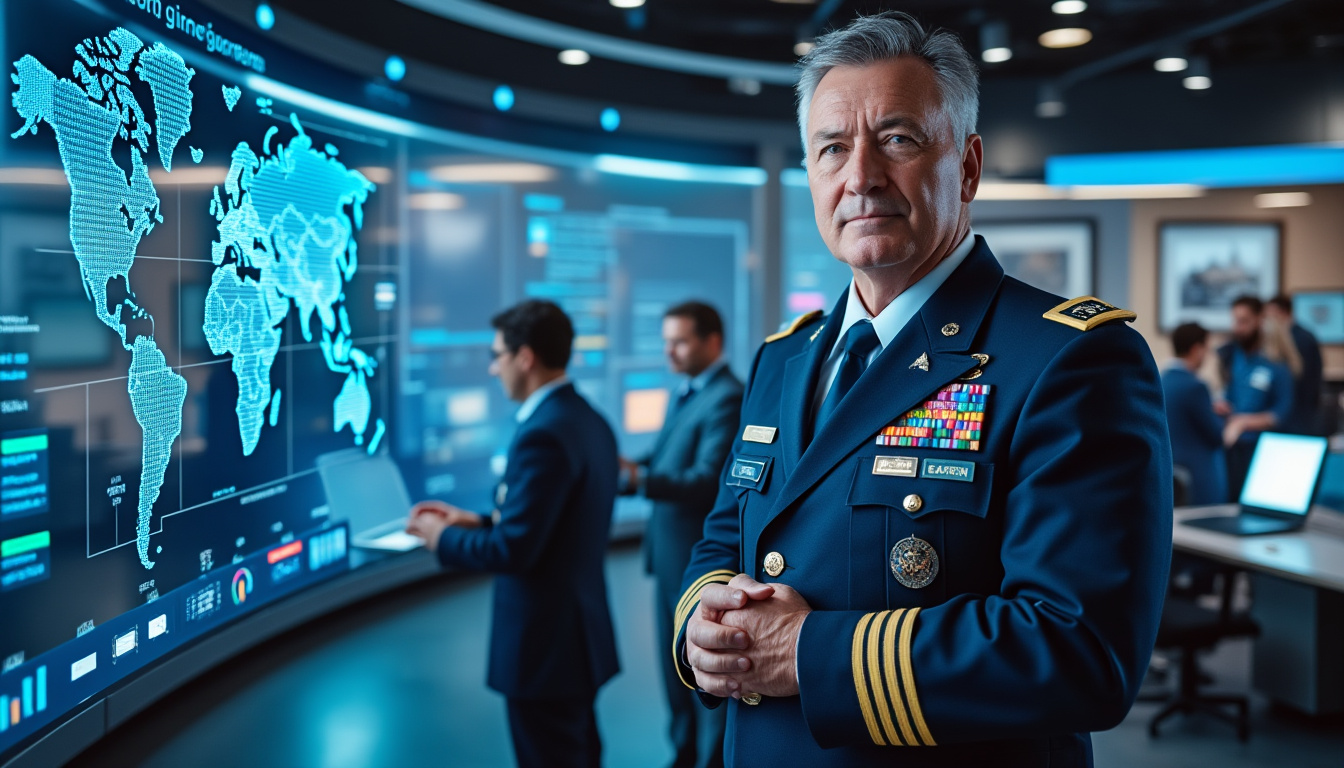In a constantly evolving world, the challenges facing military institutions are taking on unprecedented proportions. Air Force General Randall Reed, head of Transcom, is at the forefront of this digital transformation, integrating innovative solutions that rethink military logistics and operations. Faced with growing demands for the transportation of equipment and personnel, this transition to adopting digital tools is essential to effectively meet modern requirements.
The Rise of Digital Solutions in Military Logistics
For several years, military logistics has undergone profound changes. Rapid decision-making, based on data analysis, is becoming vital in a context where geopolitical issues are constantly fluctuating. General Reed, aware of this dynamic, is focused on optimizing Transcom’s performance through digital tools such as the Maven Smart system. The Challenges of Digitalization in the Military Sector
The digitalization of military operations brings with it numerous challenges, particularly in terms of data security, interoperability between different branches, and employee adaptation to these new technologies. The benefits of this transition include:
Improved responsiveness:
- The use of digital tools allows for faster response to crisis situations. Resource optimization:
- Through data analysis, it is possible to better allocate available resources based on immediate needs. Better collaboration:
- Digital tools promote seamless information exchange between different units. But despite these benefits, the transition to a digital approach requires a strong commitment from all stakeholders. Furthermore, team training is essential to ensure optimal use of new technologies.
Examples of Digital Solution Implementations
The Maven Smart system represents a striking example of the integration of artificial intelligence into Transcom operations. It processes images and videos from various sources, such as drones and sensors, and applies advanced algorithms to improve decision-making. During the “Turbo Challenge” exercise, the command tested its capabilities to ensure better coordination between units.
The results demonstrated that the application of these new technologies is not limited to simply adding tools; they truly intend to change the way we work. By enabling a better understanding of the field of operation, teams can synchronize more effectively and act proactively.
Transcom Faces Evolving Missions
Contemporary military operations are no longer limited to traditional armed conflicts. Transcom also faces humanitarian missions, relief transports, and homeland security obligations. General Reed has successfully focused his team’s efforts on these new responsibilities while integrating digital solutions to optimize results.
Challenges of Interagency Operations
A characteristic of current missions is the need to collaborate with other government agencies, such as the Department of Homeland Security. This interagency approach was put to the test during security missions at the U.S. southern border, where coordination between the Department of Defense and civilian entities was essential.
Key points identified in this coalition include:
Information Sharing:
- Increased cooperation has enabled better data sharing between entities managing operations. Process Standardization:
- Aligning procedures has helped reduce efficiency losses. Adaptation to Local Needs:
- Each agency has had to adapt its procedures to meet specific requirements on the ground. In fact, these challenges reinforce the crucial role Transcom plays in facilitating these interagency initiatives, ensuring a coherent and coordinated response.
Optimizing Performance Through the Use of Data
The growing importance of data in decision-making is undeniable. General Reed makes no secret of his ambition to use analytical data to proactively forecast and manage logistical needs. Implementing intelligent systems makes it possible to anticipate demands and optimize the use of available resources.
Towards a new era of data analysis
In this context, the implementation of predictive analytics and interactive dashboards is becoming essential. Teams can thus monitor ongoing operations in real time, measure their effectiveness, and adjust their approach accordingly. Tools like the Maven system provide each commander with a personalized dashboard, allowing them to easily access relevant data according to their needs.
Furthermore, with a data-driven approach, it becomes possible to:
Identify trends:
- Data analysis facilitates the detection of recurring patterns that can influence operational planning. Anticipate shortages:
- Rigorous monitoring of supplies and resources allows for the advance prediction of shortages or overloads. Improve user satisfaction:
- The adaptability of logistics services in response to specific needs ensures better performance and greater user satisfaction. Summary table of the benefits of data analytics
Benefit
| Description | Responsiveness |
|---|---|
| Improved response time in the event of a crisis. | Forecasting |
| Anticipation of resources needed for future operations. | Collaboration |
| Facilitates information exchange between different departments. | The role of emerging technologies in military logistics |
Technological innovations, such as autonomous drones and unmanned maritime vehicles, are opening new opportunities for Transcom. General Reed expresses his vision for integrating these capabilities into logistics operations to envision a future where deliveries are not only selective, but also efficient. Emerging Technologies Overview
These technologies represent a huge opportunity to improve logistics and operational efficiency. Here are some examples:
Drones:
Used to deliver supplies to hard-to-reach areas.
- Autonomous Vehicles: To transport goods without the need for a human crew.
- Advanced Analytics: To optimize planning and execute deliveries based on real-time data.
- Continuous research and development in these areas are essential to ensure that Transcom remains at the forefront of innovation and able to respond effectively to future challenges. General Reed emphasizes that technological advancements must go hand in hand with an overall improvement in the service provided. Conclusion: A Digital Future for Transcom
The path toward fully integrating digital solutions into military logistics is fraught with challenges, but also full of promise. Through innovative strategies and an openness to new technologies, General Reed ensures that Transcom is ready to meet the challenges of tomorrow. By emphasizing connectivity and adopting advanced digital tools, the organization is positioning itself not only to meet current needs but also to proactively anticipate future challenges.




